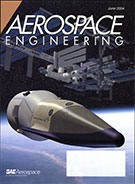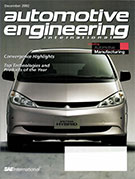Magazine

Aerospace & Defense Technology: May 2021
2021-05-01
Powering Better Battlefield Drones Using Low-Frequency Broadband Sonar on UUVs Experimenting in Realistic Environments Gets NewTechnology to Warfighters Designing Rugged SWaP-Optimized MOSA Solutions for UUVs Does Your UAV Program Need a Transponder? Understanding the Requirements and Guidelines Developing New Anti-Drone Radar Technology Deceiving the Enemy: These Are the Drones You Are Looking For By developing UAVs for physical deception roles to shape an adversary's ability to visually observe and orient to situations, the US military can decrease risk to air and ground combatants during mission execution by causing adversaries to expend resources, delay their reactions, or react incorrectly to tactical situations.



















